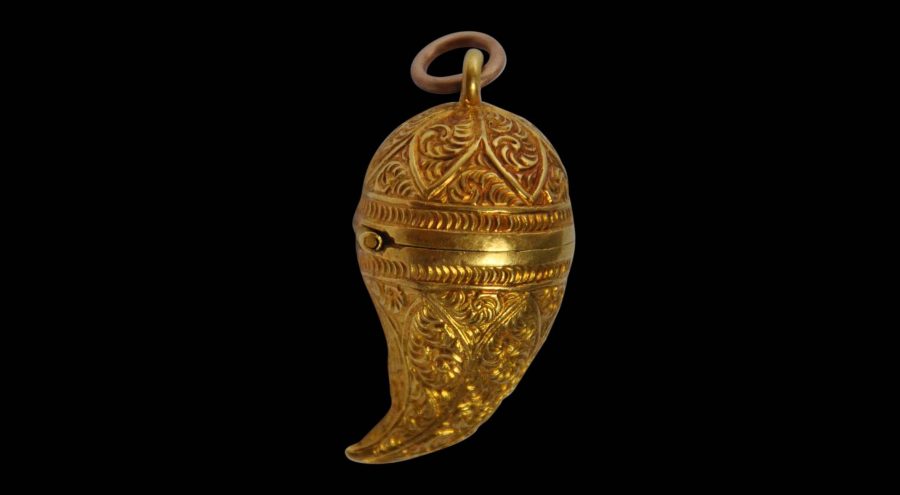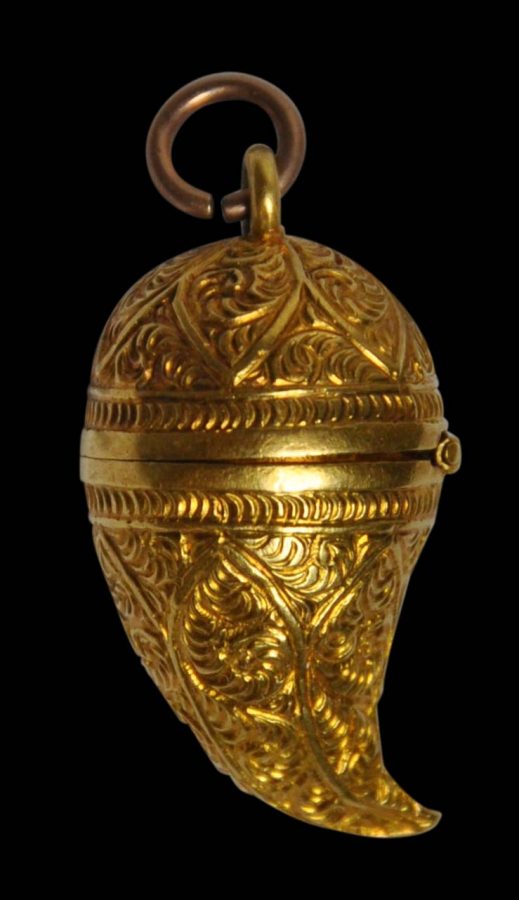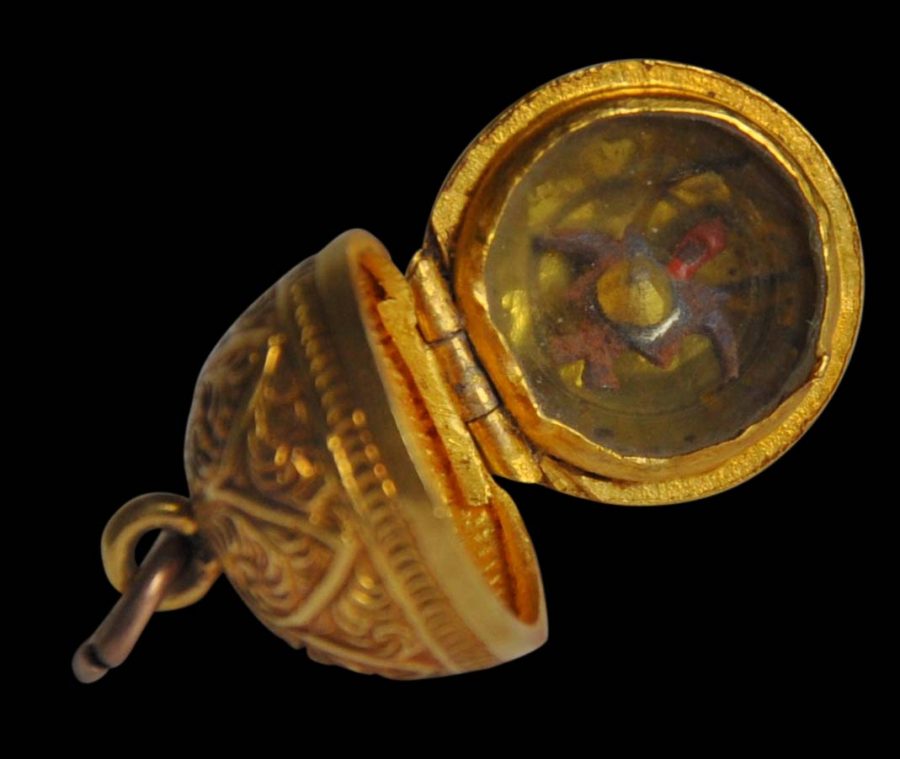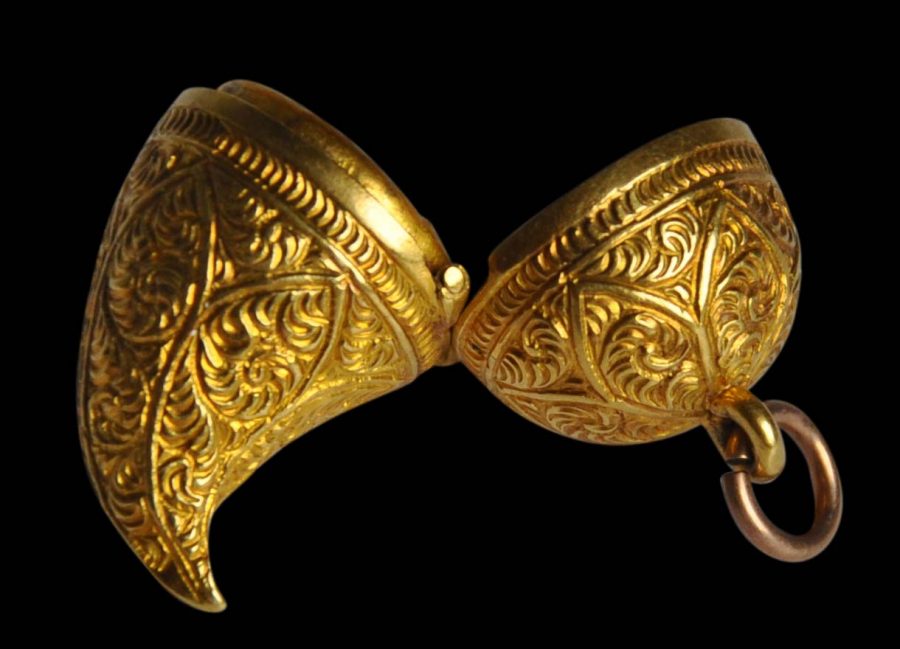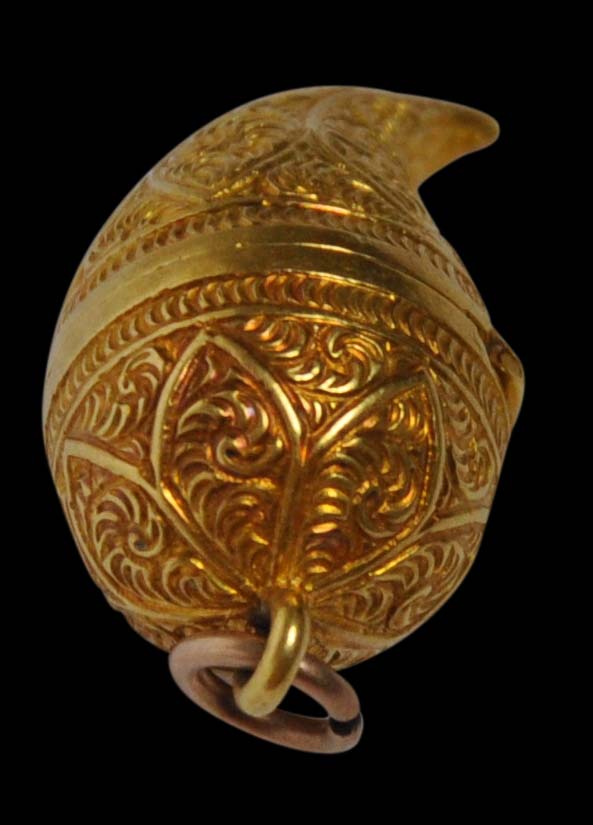The mango is a common motif in Indian jewellery (see Aitken, 2004, p, 130 for an example.) It is associated with fertility and femininity with its suggestive curvaceousness. Usually the mango form serves as a bead or as a small scent or vermilion container.
But this is the only example we are aware of in which the contents are a tiny compass. It seems likely that it was made for a Muslim woman in South India as a small, private kilbla compass.
The mango is hinged on one side and the cover opens to reveal a tiny needle, beneath glass, in the shape of a flying bird.
The exterior of the mango is engraved with mihrab-like cartouches and a petal form over the cover.
The top is fitted with a tiny gold loop to allow suspension.
The item is in excellent condition. The cover fits perfectly and tightly.
References
Aitken, M.E., When Gold Blossoms: Indian Jewelry from the Susan L. Beningson Collection, Asia Society & Philip Wilson Publishers, 2004.


